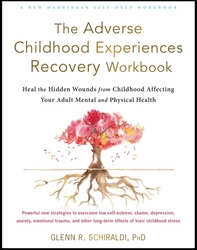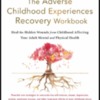Glenn R. Schiraldi, Ph.D. Psychology Today blog post, July 6, 2022
Even after disturbing memories from childhood have been reworked, lingering remnants of shame can disrupt one’s peace and sense of wholeness in adulthood. Recall that shame from childhood adversity lodges primarily in the non-verbal, visual right brain, with its deep connection to the emotional and survival regions of the brain. Effective approaches to healing, then, usually start with right-brain approaches that emphasize imagery, emotions, and visceral sensations. These approaches build upon the foundational skills previously learned, which are: strengthening the brain in preparation to heal; soothing imagery that strengthens and stabilizes the brain; regulating arousal that is stuck on too high or too low; and regulating intense emotions with skills such as mindfulness and self-compassion.
How We Rewire Shame from Adverse Childhood Experiences
The last blog explained how shame can imprint early in life in the right brain as a felt sense, beneath conscious awareness. Thus, trying to reason someone out of shame imprinted in the earliest years (a left brain approach) is usually not an effective starting point. What, then, are effective ways to change the shame that imprints in childhood and affects adults for decades? Because the right brain is visual and non-verbal, with strong connections to the emotions and visceral sensations, approaches involving imagery, emotions, and bodily/visceral sensations can be very powerful.
Below is a sampling of effective strategies with brief descriptions. Both rely on the principle of reconsolidation. Let’s preface them with two warnings:
- These strategies are best tried after the foundational skills described above have been mastered.
- If any of these strategies trigger overwhelming discomfort—or if you think they might—stop. Seek the help of a skilled mental health professional specializing in trauma who can provide structure and support in the healing process.
Rework Shame from Parents/Caregivers
Young children lack the experience to stand up to abusive or neglectful parents who willingly or unwillingly imprint the child’s brain with shame. Ideally, the resilient individual will eventually be able to look with compassion on the offending parents, reconcile with their mistreatment, and then step away from them (literally or figuratively).
For example, as a wiser adult, you might recall in imagery a time from childhood when mistreatment caused you to feel shame. With curious, non-judgmental interest, you become aware of the bodily sensations, emotions, images, and thoughts you then experienced. Whereas you might have winced, cringed, or looked away at the time, now you calmly look at the frightening or disgusted expression on the caregiver’s face. Seeing beyond that facial expression, you look deeper, and with compassion, to see the caregiver’s insecurity and pain.
Now you rescript, or modify, that memory in a way that favorably rewires the memory. With the protection, affection, and encouragement of the older, wiser adult that you now are, the child experiences at a level more sensed than thought about that he/she is safe, precious, valued, worthwhile, good, and full of potential. The child now understands that the mistreatment reflects that caregiver’s problems and not his/her worth. In the presence of that kind, wise adult, the child now senses an inner joy that is deeper than the parent’s/caregiver’s mistreatment. Maybe you imagine a protective bubble around the child, within which the child feels secure and worthwhile. Or perhaps you imagine giving that child a symbol, such as a ring, necklace, or polished stone that reminds the child of his/her worth and inner joy. Whereas before there was shame and dread, now the body feels at ease, and there is cheer, self-compassion, hope, and the intention to live well.

Overwrite Old Shame Scenes
This is a way to overwrite an old shame scene with emotions and sensations that are inconsistent with shame.
- Identify a shaming experience where you felt overwhelmed, helpless, inadequate, inferior, or humiliated. Recall your posture at the time. Track where in the body these emotions were sensed. Give the shameful feelings a size, shape, and color. Breathe compassion into area holding the shame and notice the color changing.
- Find and track an area that doesn’t feel shame to realize that shame isn’t taking over your whole body.
- Recall a triumph experience, where you felt safe, competent, successful, strong, capable, confident, and/or playful. Recall the details, how your body felt, and where you sensed those pleasant emotions. Exaggerate a posture consistent with these pleasant emotions—straight spine, expansive chest, chin lifted, looking confidently ahead, strong legs, relaxed, composed, energized. Particularly notice where these pleasant sensations and emotions are strongest. Assert your choice to override shame programming with thriving.
Alternatively, you can overwrite a shame scene literally. In writing, disclose shameful secrets so that they don’t fester inside and make you sick. For 15-30 minutes on four consecutive days, fully describe an old shame scene—all the facts, feelings, sensations, thoughts, and how the scene still affects you. What was the source of the shame? What conclusions did you draw? Soothe the unpleasant experience with self-compassion statements. Then modify the old scene in writing in any way you want. Describe the new facts, feelings, sensations, posture, and thoughts. Write yourself a compassion letter expressing empathy, appreciation for what you’ve survived, and credit for ways you’ve grown and the good you’ve done in your life. Track how that feels.
Repeatedly practicing these skills helps the brain to favorably rewire old shame memories. The next blog will describe additional ways to tame underground shame from the early years.
References
- Schiraldi, G. R. (2021). The Adverse Childhood Experiences Recovery Workbook. Oakland, CA: New Harbinger. (Scripts for rewiring shame)
- Ogden, P., Minton, K., & Pain, C. (2006). Trauma and the Body: A Sensorimotor Approach to Psychotherapy. New York: W. W. Norton.
- Kaufman, G. (1996). The Psychology of Shame, 2nd ed. New York: Springer Publishing
About the Author
Glenn R. Schiraldi, PhD, has served on the stress management faculties at The Pentagon, the International Critical Incident Stress Foundation, and the University of Maryland, where he received the Outstanding Teacher Award in addition to other teaching/service awards. His fourteen books on stress-related topics have been translated into seventeen languages, and include The Adverse Childhood Experiences Recovery Workbook, The Self-Esteem Workbook. The Resilience Workbook, and The Post-Traumatic Stress Disorder Sourcebook. The founder of Resilience Training International (www.ResilienceFirst.com), he has trained laypersons, emergency responders, and clinicians around the world on the diverse aspects of stress, trauma, and resilience.
Photo credits
- tomasso/istockphoto
- Ridofranz/istockphoto
- alexel_tm/istockphoto








Comments (6)